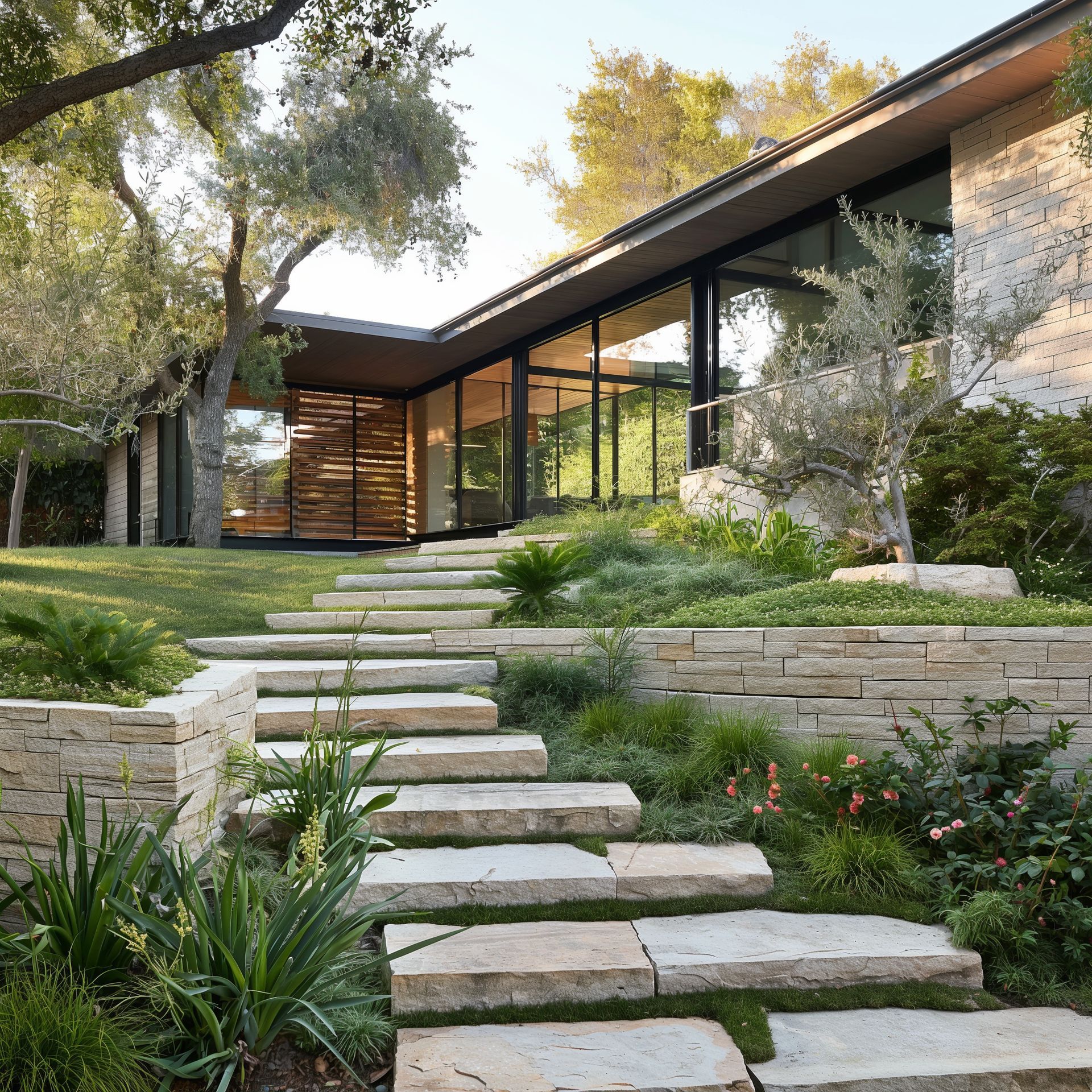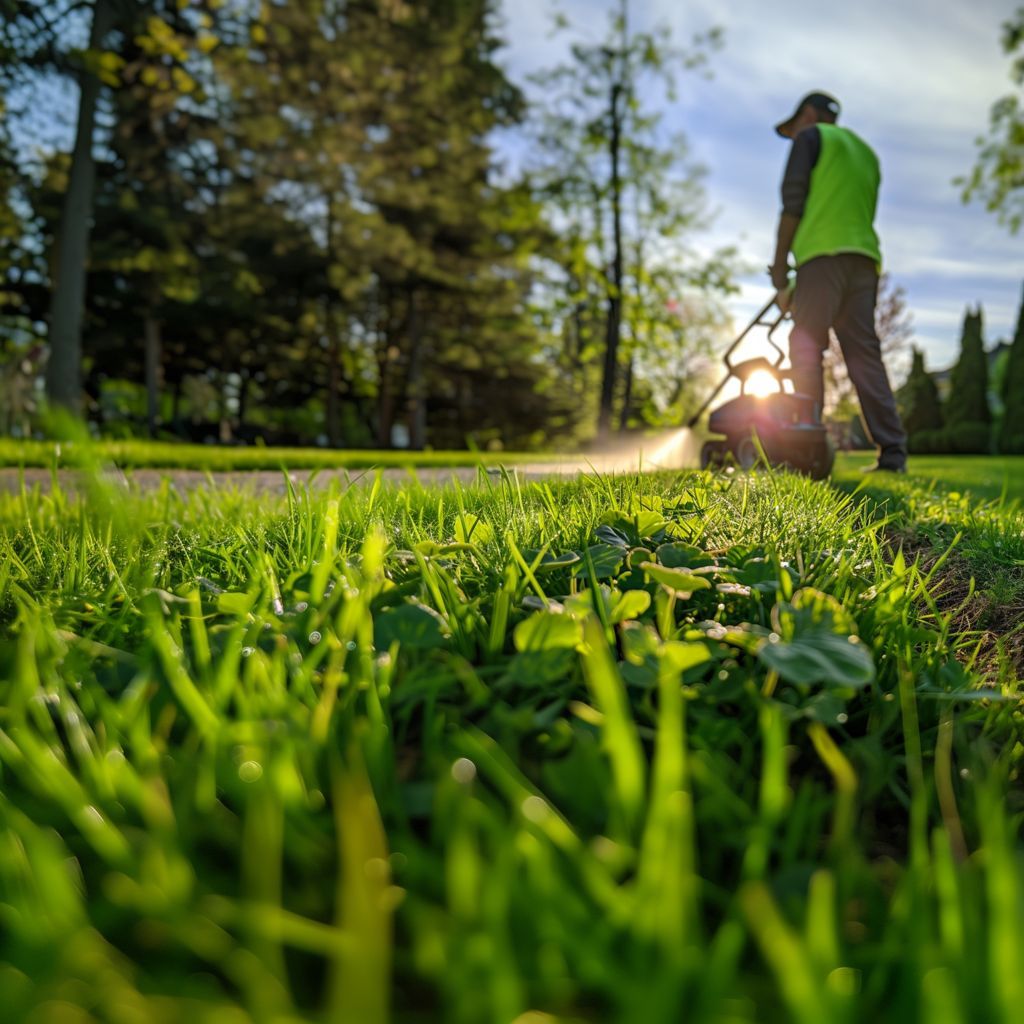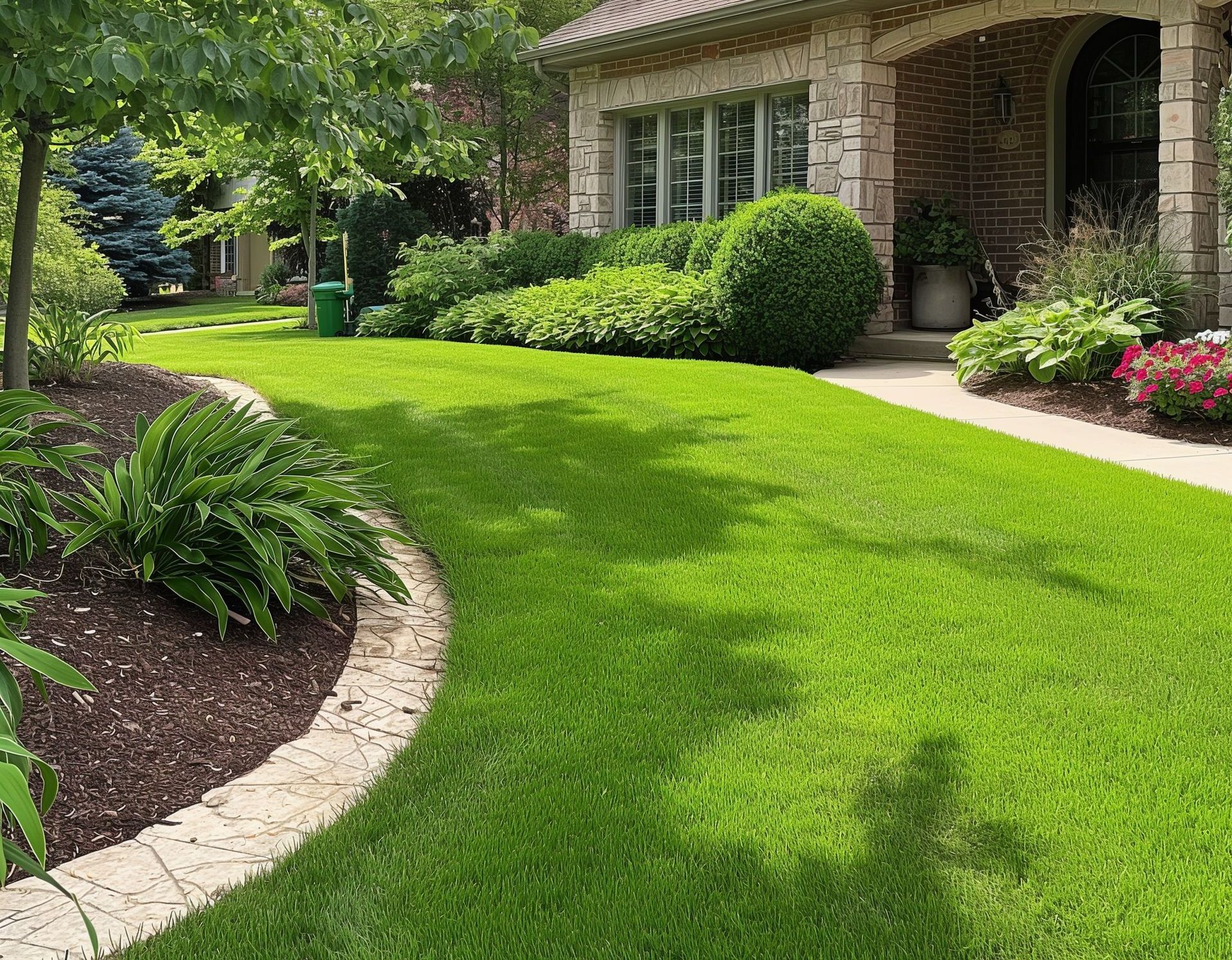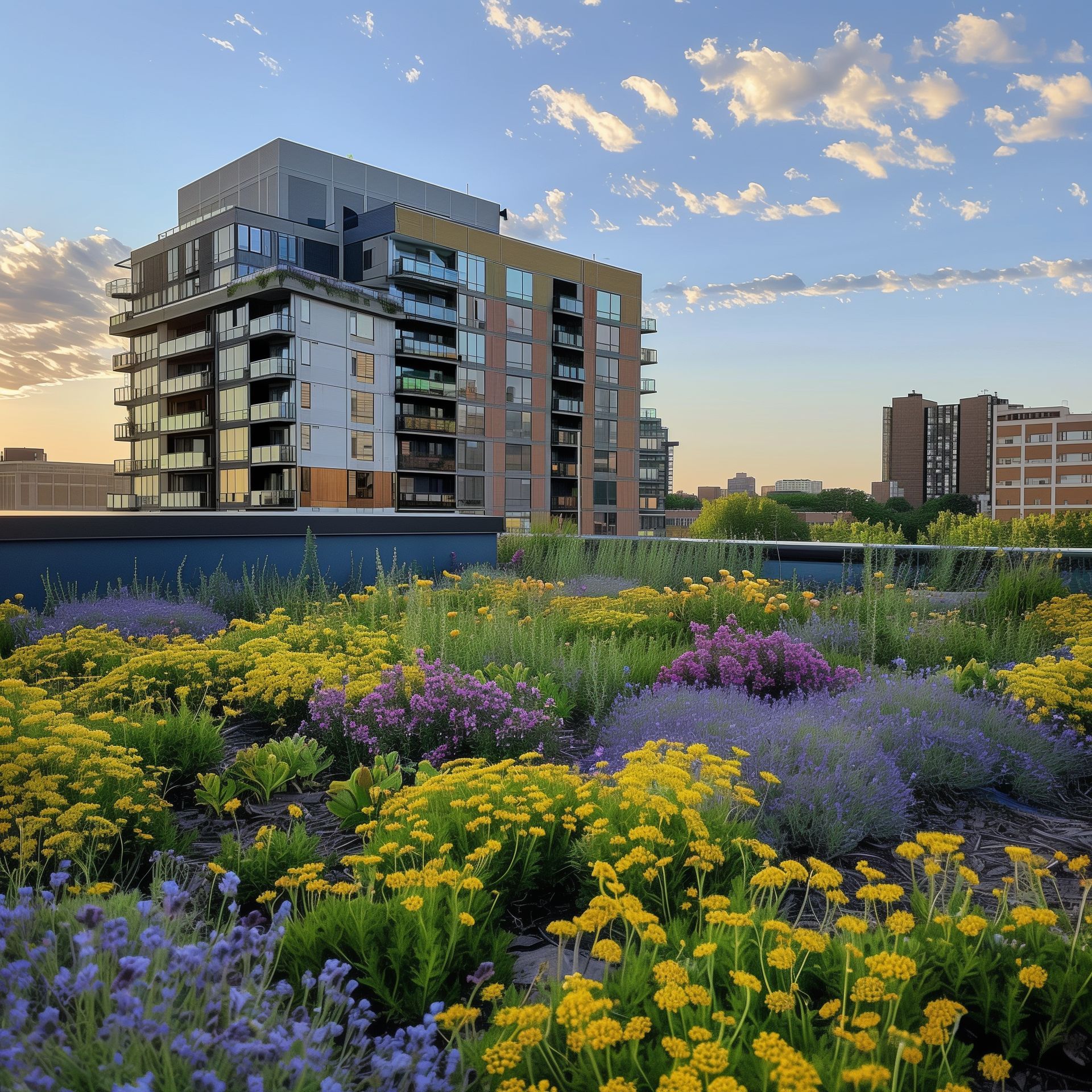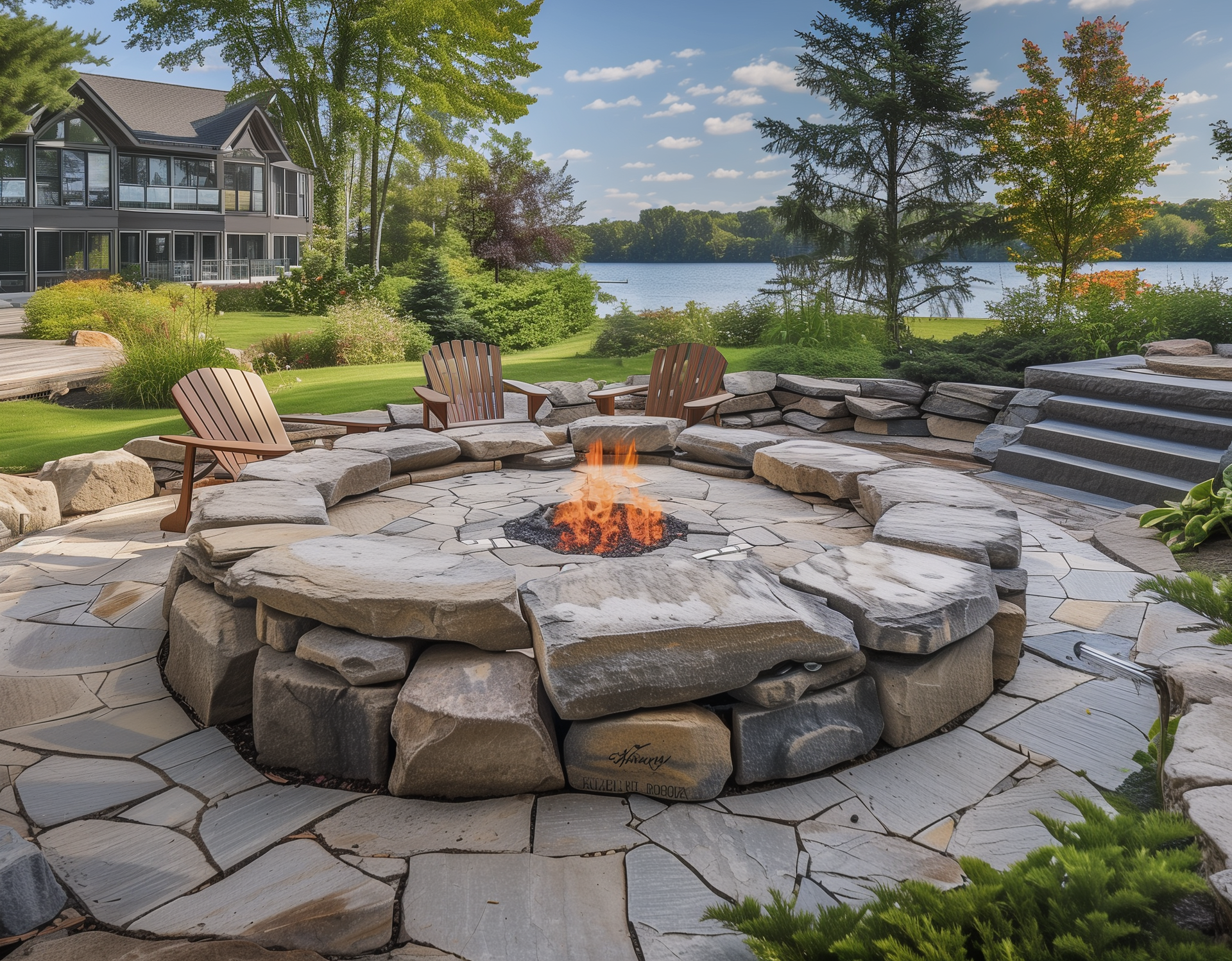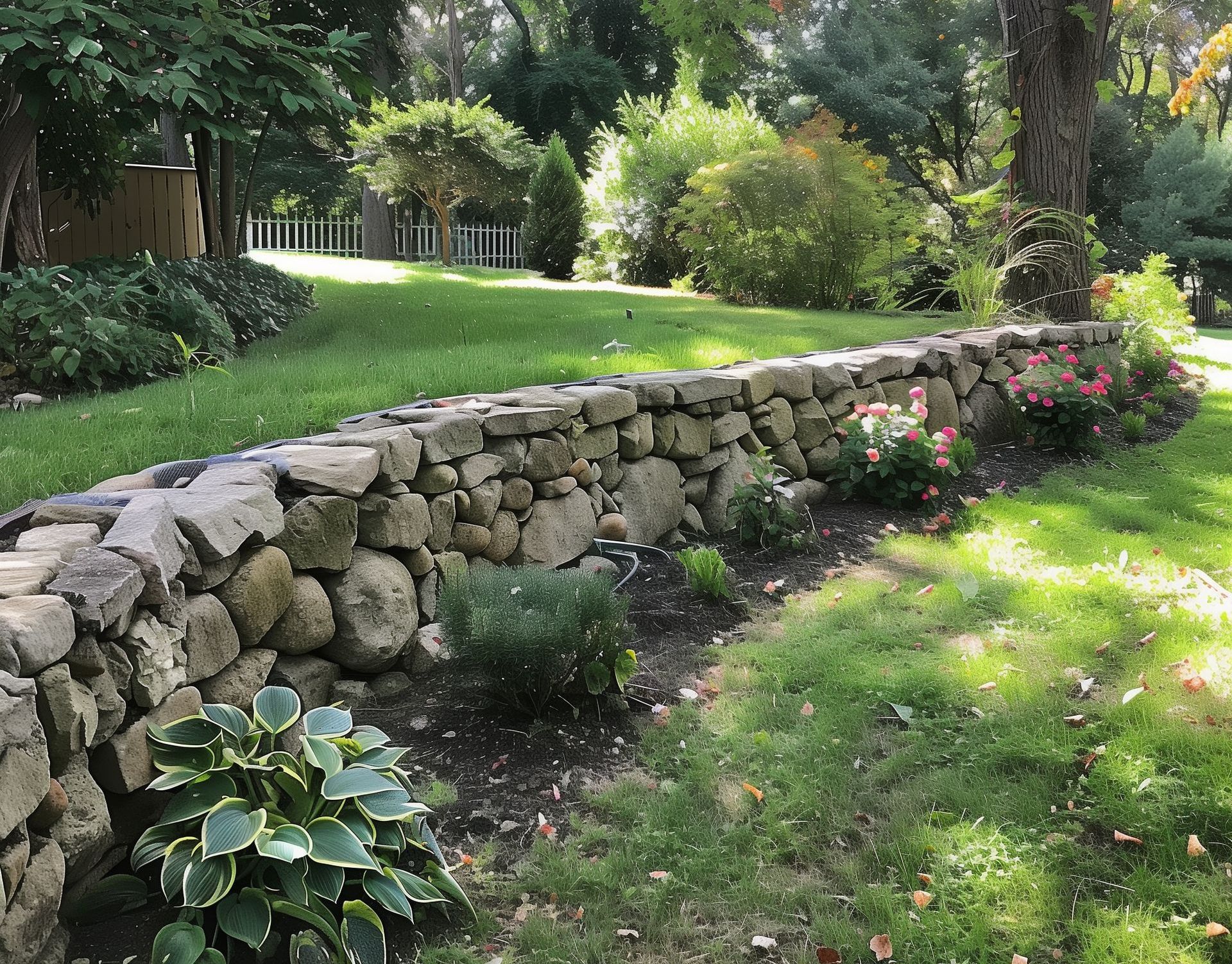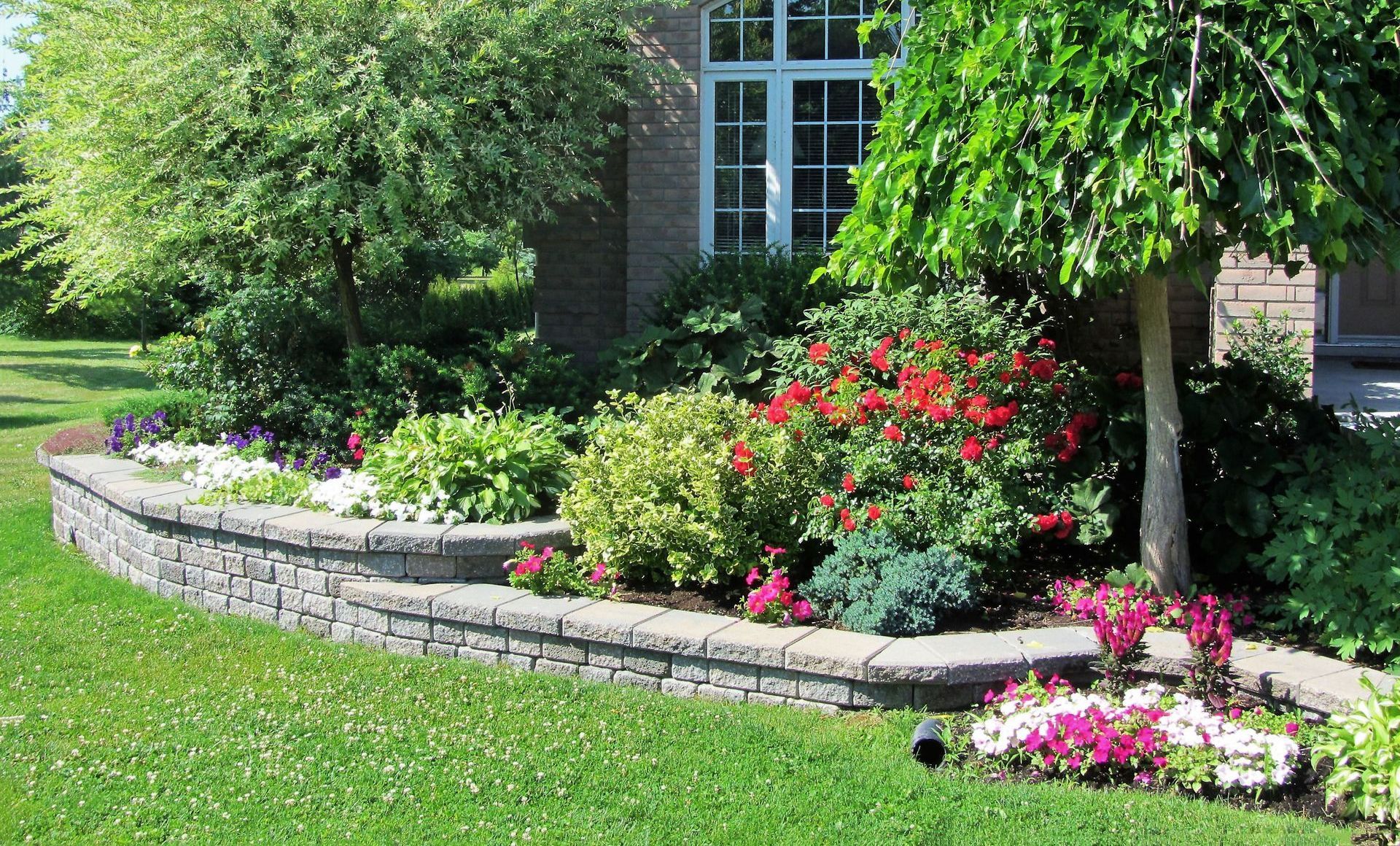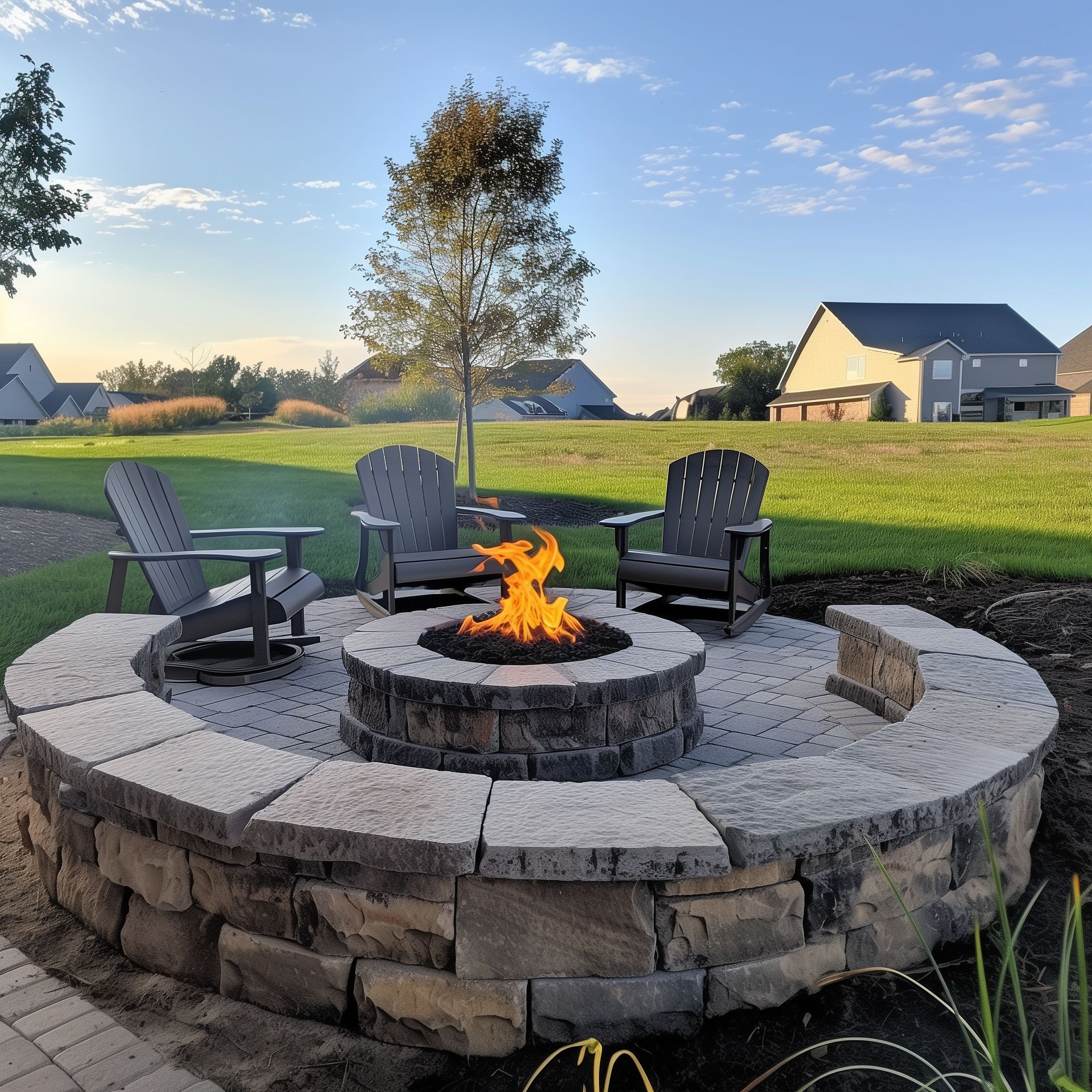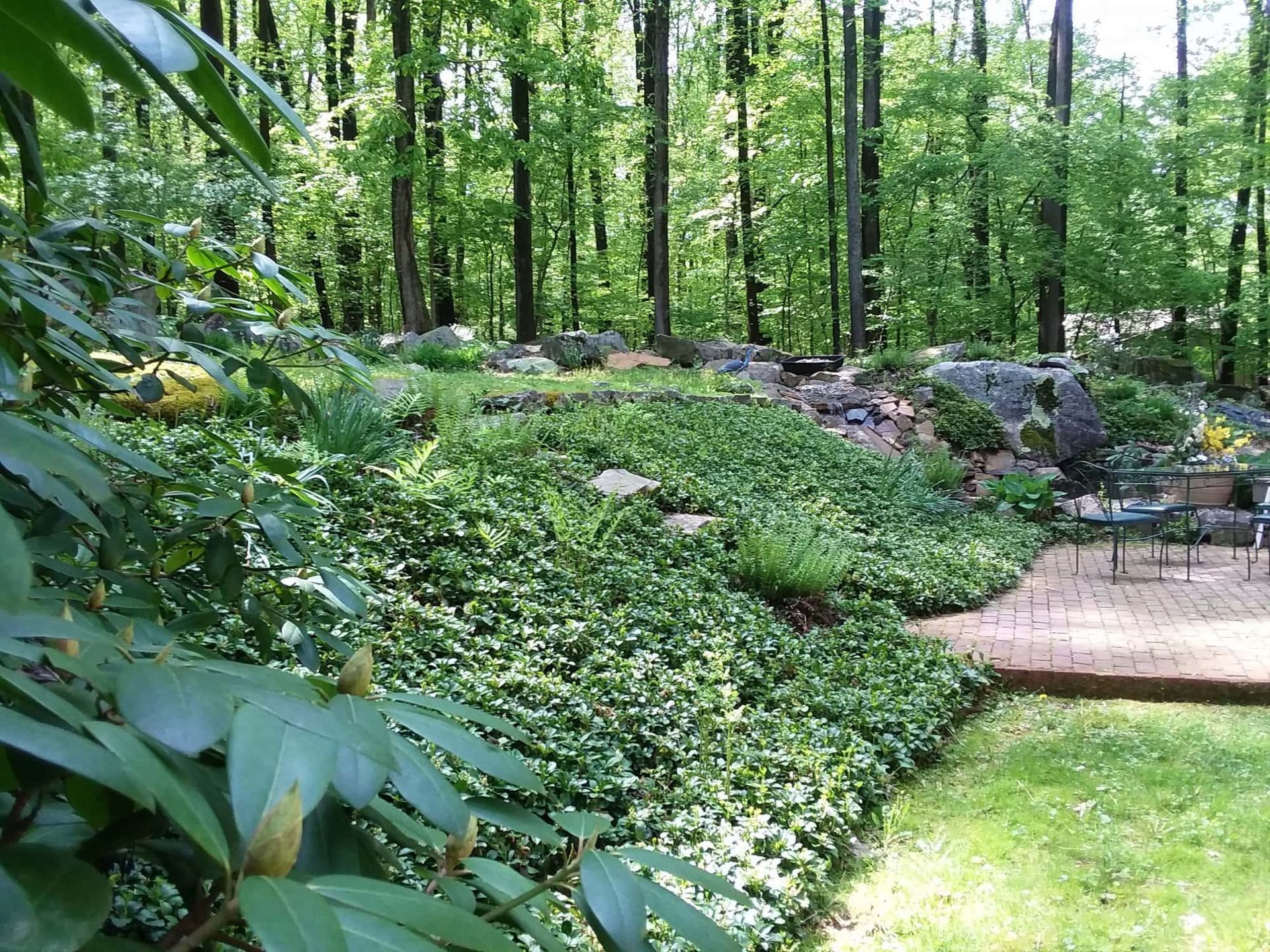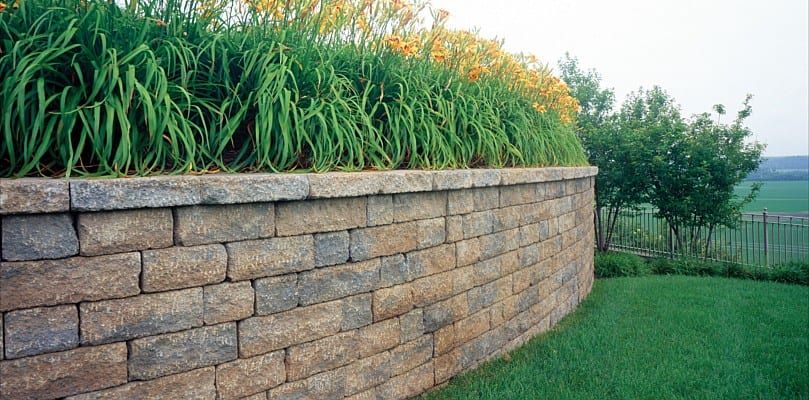
A retaining wall is an original way of adding structure to a landscape. You can use a retaining wall to hide an eyesore, but it’s also a viable solution to slow down erosion and address structural issues that exist on your property. A retaining wall will also protect your plants during the winter.
What Is a Retaining Wall?
The purpose of a retaining wall is to form a barrier that holds back a mass, typically soil. There is a wide range of designs and materials you can use to construct a retaining wall.
You might need to add a retaining wall for practical reasons because there are structural issues with your landscape, or can choose to build one for aesthetic reasons. You can do a lot of interesting things with winter plants retaining wall, and turn your retaining wall into a comfortable spot you can enjoy in the spring and summer.
Popular materials include wood, stone, and concrete. Here are some examples of retaining wall designs:
- You can build a retaining wall to create a gradient on an uneven property.
- You can use a retaining wall to create a flat surface and get more usable space on your property.
- A retaining wall can have a supportive purpose and slow down erosion.
- A wall will add definition to your landscape and will become a focal point for your design.
- A retaining wall can play an important part in managing water runoff.
- During the winter, your retaining wall will help with snow removal.
- You can upgrade your retaining wall with winter plants retaining wall, a planter garden, some built-in flower bed, or a seating area carved into the wall.
How Will A Retaining Wall Make a Difference During the Winter?
If you’re wondering how to protect plants from winter , you should know that a retaining wall can provide shelter from the elements. It will protect a section of your garden from the cold wind, humidity, snow buildup, and ice formation.
That physical barrier also helps with snow management. It can prevent snow buildup from spilling over into another area of your garden, and help you manage humidity.
During the winter, water can build up on your property. Excessive water runoff might result in water pooling in certain areas and not seeping properly. Excessive amounts of water can cause ice formation or result in plants rotting. A retaining wall can direct water runoff and prevent excessive water pooling. It will also slow down the water runoff and create a more natural seeping process for melting snow.
Slowing down the water runoff gives the soil enough time to absorb water. A slow water runoff means that water won’t build up in the soil and cause erosion.
A retaining wall will allow you to keep enjoying your garden in the winter. You can build a wall that will shelter a patio or a small space with a planter garden. The wall will keep snow from accumulating in that area and keep it usable.
If your landscape has a slope, you will find that using a wall to create a gradient with flat surfaces makes a considerable difference when it comes to snow and ice management!
How to Design Your Retaining Wall
There are a few things to consider before adding a retaining wall to your landscape. You need to determine the optimal placement for the wall, the best materials to use, and the right height and depth for the wall.
If you want to add a retaining wall for aesthetic reasons, choose a location that’s practical. Look for a way to structure your outdoor space and to delimitate different areas in your landscape. A common location is to create a line between your patio and your garden, but you can also add a wall to create different levels in your garden.
If there are concerns because of erosion or issues with water runoff, a professional will help you determine the best spot for your retaining wall.
Here is what you need to know about the best materials and height for your retaining wall:
- Wood is an ideal choice for a wall that you want to build for aesthetic reasons.
- Concrete is a better choice if you need to stop erosion or direct water runoff.
- A concrete wall can go deeper into the ground and address structural issues with your property.
- A stone wall is a good option if you want something that looks aesthetic while addressing some minor structural concerns.
- The height and depth of the wall will depend on its purpose and placement.
- A higher wall will stop erosion and create levels on your property.
- A low wall can be sufficient to manage water runoff or structure your landscape.
Choosing the Right Plants for Your Retaining Wall
Good plants for retaining walls shouldn’t need a lot of water. In most cases, the professionals who build your retaining wall will add a draining system behind the wall.
The purpose of a draining system is to address issues linked with water runoff on your property and to prevent water from building up in the soil behind the wall . A water buildup behind the wall would create enough pressure to damage the wall and would result in erosion.
The soil that is directly behind the wall will be dry, and you should avoid plants that need a lot of water. You should also avoid trees and shrubs with an extensive root system.
The wall will prevent healthy growth for these plants, and a root system that grows quickly could damage the wall. You might need to have some trees and shrubs removed before you can build your retaining wall.
You can spruce up your retaining wall with some creeping and spillover plants. Spillover plants winter will add a touch of green to your landscape during the winter, and creeping plants can help the wall blend into your landscape.
Options like creeping fig, spotted deadnettle, Angelina stonecrop, or Scotch moss make great winter plants retaining wall. You can add some dichondra, petunia, lobelia, or fuchsia in planters to get a creeping effect and add some color to your wall.
Vines are another option to explore since these plants thrive in a wide range of conditions, and your retaining wall will shelter them from the sun. You can plant grapevines, honeysuckle, or liana to complement some cascading plants for retaining walls .
A retaining wall is also ideal if you want to create a planter garden. You can place some planters on the sides and in front of the wall, or even on the wall itself. The wall will create a sheltered area for your plants, and using planters means that low moisture levels in the soil around the wall won’t be an issue.
If you learn how to wrap plants for winter with special sacking to create layers of insulation, your wall will help your plants survive the winter by sheltering them from snow and cold temperatures.
Purple fountain grass is one of the best retaining wall border plants because it creates height. You can plant it directly in the soil or use planters.
There are plenty of winter plants retaining walls to explore. Work with different shapes, sizes, and colors to turn your retaining wall into an aesthetic element of your landscape design.
The post Protect Your Plants This Winter with the Right Retaining Wall appeared first on KG Landscape Management.
Ready to Start on Your Next Project?
Call us at (763) 568-7251 or visit our quick quote page.
